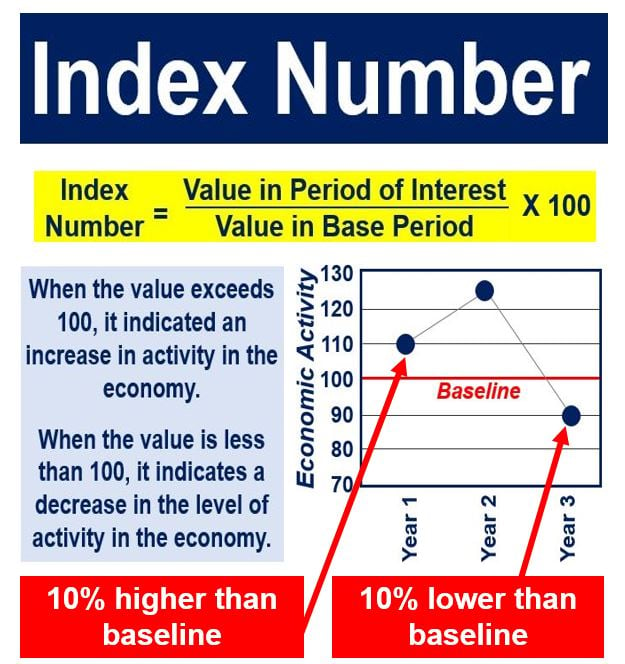Lesson Progress
0% Complete
- Nominal GDP
- A measure of GDP when prices and quantities have not been separated.
- Real GDP
- Actual quantity of goods and services.
:strip_icc():format(webp)/what-is-real-gdp-how-to-calculate-it-vs-nominal-3306040_FINAL-5bbd119dc9e77c00511d7763.png)
nominal GDP = price level × real GDP
A Simple Example: Where Real GDP Doesn’t Change
- To compute GDP across time, we must use one year’s price.
- Real GDP will be measured in a certain year’s dollars
- Nominal GDP is measured in current dollars.
- Consider Apples and Computers:
nominal GDP = (prices of apples × quantity of apples) + (prices of computers × quantity of computers)
- If the quantity of goods and services produced does not change, but prices do change
- Nominal GDP will change.
- Real GDP will not change.



A Second Example: Where Real GDP Changes
- The magnitude of the change in real GDP will depend on the year’s prices we select to calculate real GDP.



Quantity Indexes: Laspeyres, Paasche, and Chain Weighting
- Calculating real GDP changes over time:
- The Laspeyres index
- Calculates changes in real GDP using the initial prices.

- The Paasche index
- Calculates changes in real GDP using the final year prices.

- Over long-time intervals the two indexes can result in substantial differences.
- The Fisher index (chain weighting) is the preferred approach to calculating real GDP.
- Average of the Laspeyres and Paasche index.
- Preferred because new goods are invented while others become obsolete —making early or recent prices inaccurate.
- Can be applied on a year-by-year basis if we compute real GDP each year.

Price Indexes and Inflation
- Recall the formula for nominal GDP:

- The GDP deflator is the price level that satisfies the equation.
- We could compute this formula for two different years to calculate a price change.
- We could also use the following math trick:

- The inflation rate is the percentage change in the price level.
:strip_icc():format(webp)/consumer-price-index-cpi-index-definition-and-calculation-3305735-v1-554bc7dfb5b047c99abe253b932cd936.png)
Using Chain-Weighted Data
- Main reason for using chain-weighted data:
- Prices of computers rapidly changing in 1990s.
- Main disadvantage:
- The sum of real C, I, G, NX will not equal real chain-weighted GDP because the prices used in constructing the components are different.
- General rule to follow:
- For particular components of GDP, we look at the ratio of nominal variables.
- When you want real rates of economic growth, use the chain-weighted real measures.

